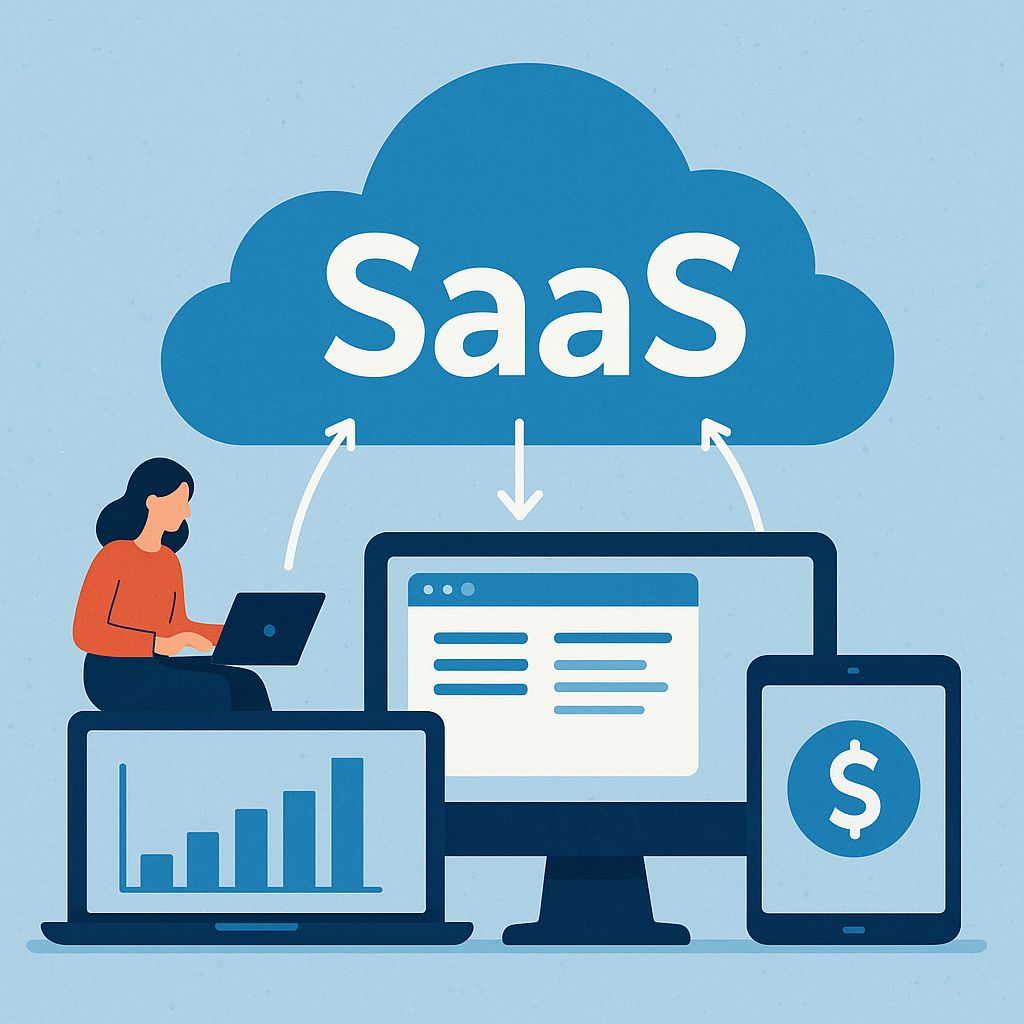Article-At-A-Glance
- Custom explainer videos can boost conversion rates by up to 80% while staying within startup budget constraints
- The average cost for quality explainer videos ranges from $1,000 to $10,000, with specific factors influencing where your project falls on this spectrum
- DIY explainer videos using template-based tools can start as low as $100, offering a viable entry point for pre-seed startups
- Strategic video placement on landing pages can reduce customer acquisition costs by up to 35%
- Animation styles like 2D motion graphics often provide the best balance between affordability and professional appearance
In the crowded digital marketplace, your startup has approximately 8 seconds to capture attention before potential customers click away. Custom explainer videos cut through this noise, delivering your value proposition with clarity and impact. The good news? You don’t need a Fortune 500 budget to create videos that convert.
At VideoMakerPro, we’ve helped hundreds of startups transform complex offerings into compelling visual stories that drive measurable growth. Our analysis shows that startups implementing custom explainer videos see engagement metrics improve by an average of 64% within the first month of deployment.
Why Your Startup Needs Explainer Videos (Even on a Budget)
The human brain processes visual information 60,000 times faster than text. This biological fact makes explainer videos uniquely powerful for startups with complex products or services. When your offering solves a problem that requires explanation, a 60-90 second video can communicate what would take several pages of text – and do it in a way that sticks.
For cash-conscious founders, explainer videos deliver exceptional ROI compared to other marketing assets. While premium blog content might cost $500+ for a single piece with uncertain conversion potential, a strategically crafted explainer video continues generating returns for 1-2 years before needing updates. The key is focusing on evergreen messaging that won’t quickly become outdated.
The most compelling reason for early-stage companies to invest in explainer videos is their versatility. A single well-produced video can serve your website, email campaigns, social channels, investor pitches, and sales presentations – effectively replacing five separate marketing assets.

The True Cost of Custom Explainer Videos in 2023
Let’s cut through the pricing confusion with real numbers. The explainer video market spans from $500 DIY solutions to $50,000 agency productions. Your startup likely belongs somewhere in the middle of this spectrum.
Average Price Ranges for Different Quality Levels
|
Quality Tier |
Price Range |
What You Get |
|---|---|---|
|
Budget |
$500-$2,500 |
Template-based animation, stock music, limited revisions |
|
Mid-Range |
$2,500-$7,000 |
Custom animation, professional voice-over, 2-3 revision rounds |
|
Premium |
$7,000-$15,000 |
High-end animation, custom music, unlimited revisions, strategic input |
What Factors Drive Explainer Video Pricing
Video length has the most direct impact on cost. While a 60-second explainer might cost $5,000, doubling to 2 minutes typically increases the price by 60-80%, not 100%. This happens because setup costs (creative brief, style development, storyboarding) remain relatively fixed regardless of length.
Animation complexity creates significant price variation. Simple 2D motion graphics cost substantially less than character animation or 3D environments. For most startups, 2D motion graphics hit the sweet spot of professional appearance and budget efficiency. Character animation adds personality but increases costs by 30-50% on average.
Voice talent quality ranges from $100 amateur recordings to $3,000+ for recognized professionals. For most startups, a mid-tier professional voice actor ($250-500) delivers the professionalism you need without unnecessary expense. Similarly, stock music libraries offer perfectly suitable tracks for $50-100, while custom compositions start at $500. Learn more about how affordable custom videos drive SaaS startups toward success.
Hidden Costs to Watch For
Behind unexpected explainer video budget overruns are typically three culprits: script revisions, animation changes, and scope creep. Most production companies include 2-3 revision rounds in their base price, with additional rounds costing $250-500 each. To avoid these costs, have key stakeholders approve your script before animation begins.
Another common hidden expense is rush fees. Typical production timelines span 4-6 weeks, but many startups need videos faster for upcoming launches or investor meetings. Expect to pay 25-50% premiums for expedited 2-week turnarounds. Plan ahead and build buffer time into your video production schedule whenever possible.
5 Ways Explainer Videos Drive Measurable Startup Growth
1. Conversion Rate Improvements (With Real Numbers)
The most immediate impact of adding an explainer video to your landing page is conversion lift. A comprehensive analysis by EyeView Digital found that well-produced explainer videos increased conversion rates by an average of 80%. For SaaS startups, our internal data shows more conservative but still impressive gains of 25-45% in free trial signups when videos clearly demonstrate the product’s core value proposition.
These conversion improvements come from addressing multiple barriers simultaneously: reducing cognitive load (how hard users must work to understand your offering), building emotional connection, and overcoming objections preemptively. The net effect is visitors who feel both intellectually and emotionally ready to take action.
2. Reduced Customer Acquisition Costs
When your explainer video resonates with your target audience, paid marketing campaigns become significantly more efficient. The most dramatic CAC reductions come from higher landing page conversion rates, but there’s a secondary benefit: improved Quality Scores in Google Ads and better engagement metrics on social platforms, which typically translate to lower costs per click.
B2B startups leveraging explainer videos in their campaigns have seen CAC reductions averaging 30-35% according to research by Wyzowl. This improvement happens because visitors arrive at your site with a clearer understanding of your value proposition, leading to higher-quality traffic and more qualified leads.
3. Higher Investor Pitch Success Rates
Founders consistently underestimate how explainer videos impact fundraising outcomes. When investors can clearly visualize your solution and its market fit, their confidence increases measurably. YCombinator partners have noted that startups with concise, well-produced explainer videos tend to communicate their value proposition more effectively during pitch meetings.
The advantage extends beyond formal pitches. When investors share your deck with partners, a compelling explainer video ensures your message remains intact rather than being filtered through someone else’s understanding. This consistent communication can be the difference between securing follow-up meetings or being passed over.
4. Extended Social Media Reach
Video content receives 1200% more shares than text and image posts combined, according to research by Brightcove. This algorithmic advantage means your startup can achieve significantly greater organic reach with video content. The most shareable explainer videos typically use the first 10 seconds to create curiosity or highlight a relatable pain point before introducing the solution.
For maximum distribution efficiency, your explainer video should be reformatted into platform-specific versions. LinkedIn performs best with square videos and professional captions, while Instagram and TikTok require vertical formats and attention-grabbing visual openings. This multi-platform approach typically increases total reach by 3-4x compared to single-format distribution.
5. Shortened Sales Cycles
Enterprise sales teams report that sharing explainer videos early in conversations shortens sales cycles by an average of 17%. This efficiency gain comes from establishing a common understanding of your solution before detailed discussions begin, eliminating repetitive explanations and addressing common objections proactively.
The most effective sales-supporting explainer videos include brief demonstrations of key features in action rather than just conceptual explanations. This approach builds prospect confidence by showing rather than telling, particularly valuable for technical products where credibility is crucial to moving opportunities forward.

Budget-Friendly Production Options That Don’t Look Cheap
DIY vs. Freelancer vs. Budget Agency Options
DIY production has evolved dramatically with template-based tools like Vyond, Renderforest, and Powtoon offering startups entry points starting at just $99/month. These platforms provide pre-built characters, backgrounds, and animations that can be customized to match your brand. The learning curve is surprisingly manageable – most founders can create their first basic explainer within 8-12 hours of platform exploration.
Freelancer collaboration presents the best value proposition for most seed-stage startups. Professional motion designers on platforms like Upwork typically charge $50-100 per hour, with complete projects ranging from $1,500-4,000. The key to success with freelancers is providing crystal-clear creative briefs and references. Always request samples of previous explainer videos before engaging, and ensure their style matches your vision.
Budget-friendly agencies occupy the sweet spot between freelancer unpredictability and enterprise agency pricing. These boutique producers typically specialize in startups, offering streamlined production processes with costs ranging from $3,000-7,000. The advantage here is getting a team of specialists (scriptwriter, designer, animator, voice talent) rather than a single freelancer handling all aspects, often resulting in a more polished final product.
Animation Styles That Cost Less But Still Convert
Motion graphics with simple iconography represents the most cost-effective animation style while maintaining professional quality. This approach uses geometric shapes, icons, and typography in motion to explain concepts visually. The style works particularly well for B2B startups with abstract services or complex technical solutions.
2D character animation with limited movement offers another budget-conscious option. Rather than fully animating characters (which requires extensive frame-by-frame work), this approach uses predefined character states with simple transitions. The result maintains personality and emotional connection while significantly reducing production costs.
Kinetic typography – animated text with minimal supporting visuals – provides the most economical option while still maintaining visual engagement. This style works surprisingly well for straightforward value propositions where the core message is compelling on its own. Many successful SaaS startups have used this approach for their initial videos before upgrading to more complex animations after securing additional funding.
Smart Ways to Cut Production Costs
Script optimization offers the highest ROI in cost reduction. Each second of animation requires design and production work, so trimming your script from 90 to 60 seconds can reduce costs by 25-30%. Focus relentlessly on communicating only what viewers absolutely must understand to take your desired action, as outlined in explainer videos that convert.
Limiting revision rounds dramatically controls costs. Most budget overruns happen when clients request multiple changes after animation has begun. Develop a detailed storyboard and get thorough stakeholder approval before animation starts. This upfront investment prevents expensive revisions later. For more insights, check out Spire Video’s proven formula for high-converting explainer videos.
Leveraging stock elements like music, sound effects, and transition animations eliminates custom design costs. Premium stock libraries like Envato Elements ($16.50/month) offer thousands of professional assets that can be incorporated into your video. Viewers rarely notice the difference between custom and stock elements when they’re thoughtfully selected.

How to Create Your First Explainer Video
The Essential 60-Second Script Formula
The most effective explainer videos follow a four-part narrative structure that neurologically primes viewers for conversion. Begin with problem recognition (10-15 seconds) – describe the pain point your audience experiences in specific, relatable terms. This creates immediate connection by demonstrating you understand their challenges.
Next, introduce your solution (20-25 seconds) by positioning it as the natural answer to the established problem. Focus on benefits rather than features, emphasizing how your offering transforms the user’s situation. The middle section should create an emotional shift from frustration to relief or excitement.
Follow with validation (10-15 seconds) using social proof, results, or demonstrations that prove your claims. This section overcomes skepticism by showing rather than telling. Finally, close with a clear call-to-action (5-10 seconds) that provides an obvious next step. The entire script should contain approximately 150 words for a 60-second video.
Visual Style Selection Based on Your Brand
Your explainer video’s visual approach should align with both your brand personality and your audience’s expectations. Tech-focused B2B startups often benefit from clean, minimalist animation styles that emphasize clarity and professionalism. Consumer-focused brands typically require more vibrant, character-driven approaches that build emotional connection.
Color psychology plays a crucial role in visual style selection. Blue conveys trust and reliability (ideal for fintech or security startups), orange and yellow evoke enthusiasm and accessibility (perfect for consumer apps), while green suggests growth and sustainability (effective for health and environmental solutions). Limit your palette to 3-4 primary colors that align with your existing brand guidelines.
Typography choices significantly impact viewer perception. Sans-serif fonts like Montserrat or Roboto convey modernity and clarity, making them suitable for most tech startups. Serif fonts like Georgia suggest reliability and tradition, appropriate for finance or legal tech. Ensure text remains on screen long enough for viewers to read it comfortably – a common mistake is transitioning too quickly.
Production Timeline Expectations
A standard explainer video production follows a predictable timeline. Script development and approval typically requires 1-2 weeks, including research and revisions. The storyboard and style frame development phase adds another 1-2 weeks as visual concepts are created and refined. Animation production represents the longest phase at 2-4 weeks, depending on complexity.
Voice recording, music selection, and sound design generally run parallel to animation, adding no additional time to the schedule. Final revisions and delivery typically add 3-5 business days. In total, expect 4-8 weeks from project initiation to final delivery for a quality custom explainer video. Rush production is possible but impacts both cost and quality.
Maximizing ROI From Your Explainer Video
Strategic Placement on Your Website
Heatmap analysis shows that explainer videos placed above the fold on landing pages generate 128% more views than those placed lower. The ideal placement pairs your video with a concise headline and call-to-action button, creating a complete conversion unit that requires minimal scrolling. This configuration typically increases conversion rates by 20-25% compared to videos placed in secondary positions.
Repurposing for Multiple Marketing Channels
Your explainer video isn’t a single asset but a content foundation that can be reformatted for multiple channels. Extract key animations as GIFs for email campaigns, where they’ve been shown to increase click-through rates by up to 42%. Create 15-second teaser cuts optimized for social media platforms with square or vertical orientations.
For LinkedIn and business audiences, consider creating a “silent version” with embedded captions, as 80% of business content is consumed without sound. Extract still frames from your animation to create infographics and social media visuals that maintain visual consistency across your marketing materials. This multi-format approach maximizes your initial investment.
A/B Testing for Continuous Improvement
The most sophisticated startup marketers treat their explainer videos as evolving assets rather than fixed productions. Simple A/B tests with different thumbnails can improve play rates by 20-30% with minimal investment. More comprehensive testing might include different opening sequences, calls-to-action, or background music to identify which elements drive the strongest engagement and conversion metrics.
Video analytics tools like Wistia or Vidyard provide viewer retention graphs showing exactly where engagement drops, allowing for targeted improvements to problematic sections. The most valuable metric to track is completion rate to CTA click-through – this measures not just whether viewers watched your video, but whether it successfully motivated them to take the next step in your conversion funnel.

Take Action: Your Explainer Video Roadmap
Begin your explainer video journey by documenting your core message and conversion goals. What specific action should viewers take after watching? How will you measure success? With these foundations established, research production options that align with your current growth stage and budget constraints. For pre-seed startups, template-based tools or freelancer collaborations often provide the best balance of quality and affordability.
As you move into production, prioritize script development above all other elements. The most visually stunning animation cannot overcome a weak narrative. Test your script by reading it aloud – it should feel conversational and compelling within the 60-second target length. Remember that your explainer video isn’t just a marketing asset but a clarifying tool that helps your entire organization communicate more effectively about what makes your startup special.
Frequently Asked Questions
Q: How long should a startup explainer video be?
Q: Can I update my explainer video later as my product evolves?
Q: What’s the minimum budget needed for a professional-looking explainer video?
For startups with extremely limited resources, consider these alternatives to full explainer videos:
Animated GIFs demonstrating key features ($250-500)
Founder-narrated screen recordings with professional editing ($500-1000)
Static explainer infographics with professional design ($300-600)
Short-form testimonial videos from early customers (often free with permission)
These alternatives can effectively bridge the gap until full explainer video production becomes financially viable for your startup.
Q: Should I use real people or animation for my startup explainer?
Q: How quickly can I get a custom explainer video produced?
If you need faster results, consider starting with a simplified “minimum viable video” focusing only on your core value proposition. This approach allows you to have something functional within 2-3 weeks while developing a more comprehensive explainer on a standard timeline.
Remember that your explainer video is often the first impression potential customers will have of your startup. Quality should never be completely sacrificed for speed, as a poor first impression can be difficult to overcome later.
Explainer videos represent one of the highest-ROI investments available to resource-constrained startups. When strategically produced and deployed, they simultaneously improve conversion metrics, enhance brand perception, and reduce customer education costs. At VideoMakerPro, we’re committed to helping founders leverage this powerful tool regardless of their production budget. For more insights, explore how affordable custom videos drive SaaS startups toward success.
Affordable custom explainer videos can significantly boost your startup growth by effectively conveying your message to your target audience. These videos are designed to simplify complex ideas, making them more accessible and engaging. If you’re looking to enhance your marketing strategy, consider how custom videos drive SaaS startups toward success. By investing in a professional explainer video, you can increase brand awareness, improve customer understanding, and ultimately drive sales.





